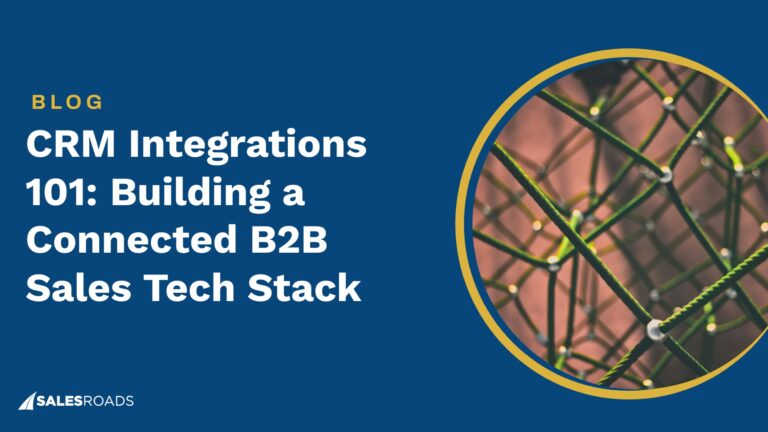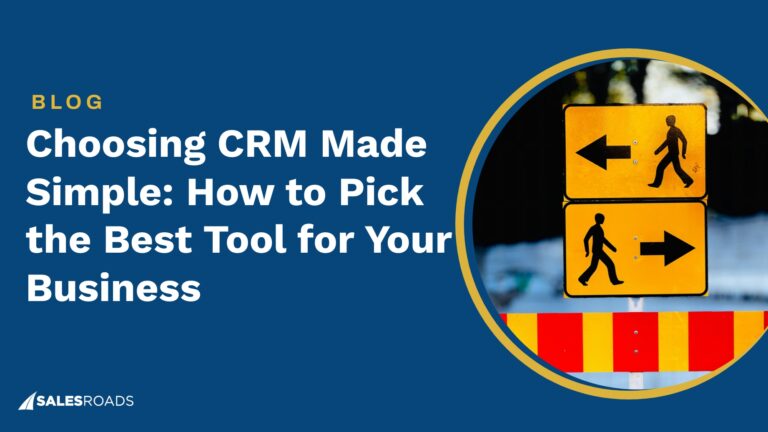Standing out in a crowded market is survival. When prospects are flooded with similar offers, what sets your business apart? Why should they choose you over a dozen competitors who claim to solve the same problem?
The answer lies in your product differentiation strategy.
Whether you sell software, manufacturing solutions, or healthcare services, your ability to clearly articulate what makes your offer unique is the key to grabbing attention, building trust, and closing deals.
In this article, we’ll break down proven differentiation strategies that help you sharpen your competitive positioning, craft a compelling, unique value proposition, and win over buyers who’ve heard it all before.
What Is a Product Differentiation Strategy?
A product differentiation strategy is the approach a company takes to stand out from competitors by emphasizing what makes its offering unique.
In a crowded market—especially one filled with similar services—it’s what helps buyers quickly understand why they should choose you over anyone else. Strong competitive positioning means your message connects with the right buyers and doesn’t get lost in the noise.
There are two common types of product differentiation strategies you’ll see: vertical and horizontal.
Vertical Product Differentiation
Vertical product differentiation means your product or service delivers objectively better performance or value compared to alternatives. This could include factors like higher efficiency, greater reliability, faster turnaround, or proven ROI improvements.
For example, a manufacturing firm might offer machinery with 25% lower downtime than competitors, or a SaaS provider could guarantee faster onboarding times that reduce client costs. These measurable advantages address business buyers’ priorities like productivity, cost savings, and risk reduction.
Vertical differentiation is powerful because purchasing decisions often hinge on data-driven outcomes and tangible benefits that improve operational performance or financial results.
Horizontal Product Differentiation
Horizontal product differentiation focuses on addressing specific business needs or preferences rather than being objectively better. Here, your product or service appeals to particular industries, company sizes, or use cases.
For instance, a software solution might offer tailored features designed for healthcare compliance, while another targets financial services with enhanced security controls. Neither is inherently superior overall, but each aligns more closely with the priorities of different buyer segments.
Why Is Product Differentiation Important?
In sales, you’re often reaching out to prospects who didn’t ask to hear from you. That makes your first impression everything. A clear product differentiation strategy ensures that your offer doesn’t just blend into the noise; it immediately signals value and relevance.
When you’re selling into a crowded market, standing out isn’t optional. Buyers are inundated with similar sales pitches every day. If you can’t clearly explain how your solution is different—or better—your message will likely be ignored.
That’s where product differentiation becomes a competitive advantage.
It helps your sales team:
- Communicate a unique value proposition with confidence
- Build credibility early in the conversation
- Win deals against competitors who offer similar features
More importantly, it helps your prospects make a decision. When they understand what makes you different, they’re more likely to move forward, especially if your differentiation speaks directly to their pain points.
Effective Product Differentiation Strategies
A solid product differentiation strategy is what allows your team to cut through the noise and get real attention from decision-makers.
Here are a few product differentiation strategies that help with competitive positioning and build a stronger case for your solution:
Performance-Based Outcomes
If your product or service delivers measurable, superior outcomes, that’s your biggest differentiator. Many companies talk about features, but buyers want proof of impact.
A product differentiation strategy rooted in outcomes makes it easier for sales teams to lead with confidence and build immediate trust.
Let’s say your software reduces downtime by 40%, or your logistics solution cuts delivery errors in half. These aren’t just internal metrics; they’re tools for your sales team.
When a rep says, “Our platform helped [customer] reduce rework by 30% within three months,” it shifts the conversation from price to value delivered.
In this episode with David Kreiger on the “Sell Like A Leader” podcast, Andy Paul said,
“Understand the outcomes that really matter to your decision-makers. Because no one’s buying a product, they’re buying increased cash flow.
What the company is doing when they make a decision to buy your product is, they’re making a decision about how to allocate their capital, and you need to be able to justify the allocation of that capital.”
Listen to the episode here:
Buyers are increasingly skeptical of generic claims.
Performance data helps them make decisions faster. It also improves your competitive positioning, especially in crowded categories where multiple providers promise similar results. If you can back up your claim with case studies, customer success stories, or before-and-after comparisons, your story becomes harder to ignore.
To apply this strategy, equip your team with outcome-based messaging. Use real numbers, tied to real problems. Make sure those numbers reflect what your prospects actually care about—cost savings, time saved, increased efficiency, etc.
And don’t overpromise. Performance-based differentiation only works when the numbers are accurate and repeatable. But if you’ve got the proof, it’s one of the fastest ways to stand out in a crowded market and show your unique value proposition with clarity and credibility.
Unique Value Proposition in Messaging
Your unique value proposition isn’t just a line in your slide deck; it’s the reason someone chooses you over a competitor. And in sales, it has to come through fast.

Research shows only 5% of brands are considered unique. This scarcity makes every bold, clear differentiator far more powerful; your unique position becomes your most valuable asset.
A strong value prop speaks directly to a problem your buyer has and positions your solution as the best way to solve it. For example, instead of saying “We offer end-to-end manufacturing solutions,” a stronger message might be, “We reduce manufacturing defects by 35% using AI-powered quality control.”
It’s not about what your company does. It’s about what the buyer gets and why that outcome matters in their context. That’s what makes it a product differentiation strategy.
If your competitors are all saying the same thing, your unique value proposition should focus on how your approach or results are different. Do you specialize in a niche? Have a proprietary method? Deliver faster onboarding?
Salespeople need to repeat this message everywhere: in cold calls, emails, product demos, and even LinkedIn DMs. When it’s consistent and clear, it becomes memorable.
And memorability improves your competitive positioning, especially in industries where the differences between providers can feel blurry to the buyer.
Human-Led Outreach with Tech Support
Even in industries driven by innovation, relationships still matter. That’s why a product differentiation strategy based on human-led sales can be so effective.
Buyers can tell when they’re reading an automated email or talking to someone who’s just reading a script. It doesn’t matter whether you sell software, equipment, or services. When your sales team knows the buyer’s world, asks the right questions, and personalizes their approach, they create meaningful conversations, not transactions.
But this doesn’t mean ignoring technology. Tools like CRM systems, email sequencing platforms, and analytics help your team move faster and smarter. The key is using those tools to amplify the human element, not replace it.
This hybrid model gives you a distinct edge. It lets you scale while still staying relevant. It’s especially valuable in high-ticket or complex sales, where the buyer journey is long and trust is essential.
Channel Differentiation
A powerful but often overlooked product differentiation strategy lies in how you reach your buyers. Many companies default to the same channels—email, social media, maybe trade shows. But what if you leaned into channels your competitors avoid?
Let’s take cold calling.
It’s underutilized in many industries because it’s seen as outdated. But that’s exactly why it can work. If your competitors avoid the phone, and you use it well, you’re instantly more visible. In a market where inboxes are overflowing, a direct conversation can cut through the noise.
The same goes for other channels like direct mail, in-person events, or even strategic partnerships. The goal is to be where your competitors aren’t and to show up well when you get there.
This strategy strengthens your competitive positioning by proving you’re willing to do what others won’t. It also builds trust faster, especially in industries where buyers value expertise and personalized attention.
To make channel differentiation work, look at where your audience engages and where they’re underserved. Then train your sales team to approach that channel with skill.
If you’re using the phone, make sure reps know how to handle objections. If you’re using LinkedIn, tailor messaging by persona or industry.
Pricing Model Differentiation
Pricing is a strategic lever for product differentiation. When done right, your pricing model becomes part of your unique value proposition, giving sales teams another reason to stand out and win deals.
It’s not just about being cheaper. It’s about structuring your pricing in a way that aligns with the buyer’s goals, risk tolerance, and buying behavior.
For example, if your competitors all sell via long-term contracts, offering a flexible month-to-month model could help you break into accounts where commitment is a barrier.
On the flip side, if others price by user, you might offer value-based pricing tied to usage or outcomes.
Your reps should know how to position these differences clearly. “We price based on active usage, so you’re only paying for what your team actually uses” is more compelling than “We’re cheaper.” It reframes the value conversation around fairness and alignment, not discounts.
To make this strategy work, your pricing must be transparent, defensible, and easy to explain. And reps should be trained to tailor the pricing conversation based on persona—what a CFO needs to hear is different from what matters to a department head.
Bottom Line
Your buyers don’t need more choices; they need clearer ones. The companies that win are the ones that make it easy for prospects to say, “That’s exactly what we need.”
So ask yourself: Are you competing on features or on impact?
Because when you differentiate based on outcomes, positioning, channels, and pricing that your market actually cares about, you stop blending in and start becoming the obvious choice.










